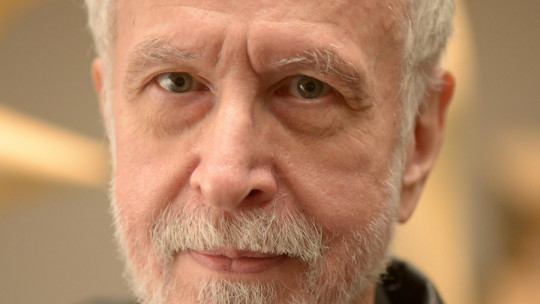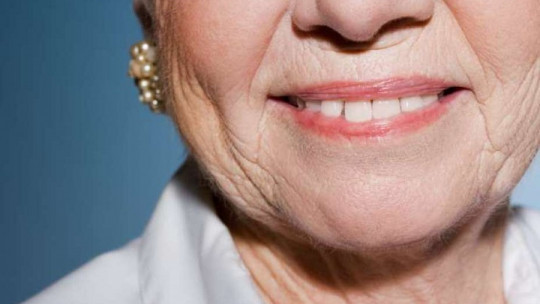
Autogynephilia is a term that has sparked considerable debate and discussion in the field of psychology and gender studies. Coined by psychologist Ray Blanchard in the late 20th century, it describes a phenomenon where a person, typically a man, experiences sexual arousal at the thought of themselves as a woman. While it has been a topic of controversy, understanding autogynephilia and why it is not classified as a paraphilia can shed light on broader issues related to gender identity and sexual orientation.
Autogynephilia is a controversial concept that has been appearing for years in the debate about the relationship between sex and gender, and that is often used for political purposes.
In this article we will see what it consists of and how it has been defined in the historical context in which it emerged; a topic that leads us to question to what extent science can observe the phenomena of human behavior from a purely objective perspective.
Understanding Autogynephilia
Definition and Origins
Autogynephilia refers to the sexual arousal that a person experiences when imagining themselves as the opposite sex. The term was introduced by Ray Blanchard, who suggested that it was a significant factor in the development of transgender identities among some individuals. The concept has been widely debated and critiqued, with many arguing that it oversimplifies complex gender experiences.
Key Components
- Sexual Arousal: The central element of autogynephilia is sexual arousal related to the fantasy of being a woman.
- Gender Identity: It is important to distinguish autogynephilia from gender identity, as the former is focused on sexual arousal, while gender identity pertains to a person’s sense of themselves as male, female, or non-binary.
The Controversy Around Autogynephilia
Criticisms of the Concept
Autogynephilia has been criticized for various reasons:
- Reductionism: Critics argue that the concept reduces complex gender identities to a mere sexual fetish, disregarding the multifaceted nature of gender dysphoria.
- Lack of Empirical Support: There is limited empirical evidence supporting the idea that autogynephilia is a primary factor in transgender identities.
- Stigmatization: The term has been accused of stigmatizing transgender individuals by framing their experiences as pathological or abnormal.
Perspectives from Gender Studies
In gender studies, autogynephilia is often viewed as an outdated concept that does not accurately reflect the lived experiences of transgender individuals. Many scholars argue that focusing on autogynephilia can be harmful and detract from more nuanced understandings of gender identity and expression.
Why Autogynephilia Is Not Considered a Paraphilia
Definition of Paraphilia
Paraphilia is a term used to describe atypical sexual interests that involve objects, situations, or individuals not typically associated with sexual arousal. These interests are often considered outside societal norms and can include a wide range of behaviors.
Distinction from Paraphilia
Autogynephilia differs from paraphilia in several ways:
- Context of Arousal: Paraphilias involve sexual arousal from atypical objects or scenarios, while autogynephilia is centered on the individual’s own fantasy of being the opposite sex.
- Gender Identity vs. Sexual Fetish: Autogynephilia is linked to gender identity and personal self-concept, rather than a specific sexual fetish or interest in external objects.
Clinical and Ethical Considerations
From a clinical perspective, autogynephilia is not classified as a paraphilia because it does not fit the diagnostic criteria for paraphilic disorders. Additionally, the ethical implications of labeling autogynephilia as a paraphilia involve concerns about stigmatizing transgender identities and perpetuating harmful stereotypes.
The Role of Autogynephilia in Understanding Gender Identity
Gender Dysphoria
Gender dysphoria is the distress experienced when one’s gender identity does not align with their assigned sex at birth. This condition is recognized by major psychological and medical organizations, including the American Psychiatric Association and the World Health Organization. It is distinct from autogynephilia and involves a profound sense of misalignment between one’s gender identity and their physical body.
Exploring Gender Identity
Understanding gender identity requires a comprehensive approach that considers psychological, social, and cultural factors. Autogynephilia, when framed as a paraphilia, does not adequately address the complexity of gender identity and the experiences of transgender individuals.
Current Perspectives and Future Directions
Advances in Research
Recent research in gender studies and psychology has moved beyond the concept of autogynephilia to explore more nuanced understandings of gender identity. Advances in research focus on the diversity of transgender experiences and the importance of recognizing gender identity as a valid and essential aspect of an individual’s self-concept.
Emphasizing Inclusivity
Modern approaches to gender identity emphasize inclusivity and respect for individuals’ self-identified genders. Moving away from outdated concepts like autogynephilia allows for a more compassionate and accurate understanding of transgender experiences.
Future Research Directions
Future research in gender studies should focus on understanding the complexities of gender identity without relying on reductive or stigmatizing concepts. Emphasizing diverse perspectives and lived experiences will contribute to a more comprehensive and respectful approach to studying gender.
Paraphilia or expression of gender identity?
Sex and gender are essential phenomena for the definition that a human being makes of himself. In the first case, it refers to its biological reality, and in the second to a social construction linked to the way in which masculinity and femininity are understood in the spatial/temporal coordinates in which they have lived.
Sexual orientation would be the third variable, differentiated from the previous ones and from which the decision would be made to maintain romantic relationships with another person based on their sex or regardless of it (homo/heterosexual, bisexual, asexual, etc.).
Since they are all phenomena that maintain a certain independence from each other, it is likely that disparate and plural combinations will arise in which there does not necessarily have to be a predictable directionality according to traditional standards.
Next we will discuss a complex and enormously controversial issue: autogynephilia, which was postulated as a paraphilia whose purpose would be to explain the epistemological substrate of transsexuality. The controversy over this issue continues to this day.
What is the concept of autogynephilia?
Autogynephilia (autogynophilia) is a deeply controversial construct It can be divided into different semantic units following its Greek origin: “auto” (relative or referring to oneself), “gine” (woman) and “philia” (attraction or desire); Therefore, it can be summarized as obtaining sexual gratification that arises from imagining oneself assuming feminine attributes, or simply using the clothing that has traditionally been assigned to this gender.
In this way, a specific paraphilia would develop in which a male would feel attracted to himself as long as he adopted female traits. Of course, only theoretically.
This word, which does not enjoy unanimous consensus among the research community, was coined by psychologist Ray Blanchard as a result of a series of works published in the late 80s and early 90s. Through its formulation, not only would the recognition of a “new” pathology be sought, but the definitive articulation of a theoretical model through which to confront the traditional vision of the transsexual woman (male by birth) that would conceive her as a “woman trapped in the body of a man” (which is also known as the female essence narrative).
Blanchard’s studies were carried out by dividing a (quite small, actually) sample of transsexual women into four groups, depending on their sexual orientation: androphiliacs (attracted to men), gynephiliacs (to women), bisexuals and asexuals. What the author described in his work was that the last three groups, which he baptized as non-homosexuals, reported having more frequently experienced excitement when imagining themselves with the appearance or clothing of women, compared to the androphilic or homosexual group (75% vs. 15%). None of them wanted to undergo reassignment surgery.
This finding, together with the fact that the group of non-androphiliacs (gynephiliacs, bisexuals and asexuals) reported less frequently that they had shown any hint of femininity during their childhood, encouraged him to conclude that: androphilic female transsexuals were homosexual people who sought modify their bodily characteristics in order to attract heterosexual men, and that the rest of the transsexuals would be affected by a paraphilia (autogynephilia) in which their own corporality would become an object of desire. This would only affect those who were assigned the sex of male at birth, and not female-male transsexuals.
Understanding this concept according to Blanchard’s postulates, autogynephilia would describe a large group of transsexuals according to the way in which they direct their sexual desire, completely ignoring the question of identity (or subsuming it in a reductionist way). With this way of understanding things, all non-androphilic transsexuals would be considered heterosexuals whose focus of interest would be displaced, so that instead of desiring a woman they would desire themselves adopting her role. That is, the person himself would become the very object of his narcissistic paraphilia.
Autogynephilia would imply a redirection of the object of desire as has been described in some cases of apotemnophilia (attraction to people who suffer from serious amputations and which ends with the resection of limbs or other parts of one’s own body). Although This is a theory that went unnoticed in the scientific community, was rescued at the beginning of this century by J. Michael Bailey and has motivated a substantial volume of studies for and against it. And it is a theory that has been considered openly transphobic by the LGBT community, and clearly harmful to the trans community.
Characteristics
First of all, it is important to highlight that autogynephilia It is not included in any of the commonly used diagnostic manuals (DSM-5 or ICD-10) as a clinical phenomenon, in none of the general categories available to them.
On the other hand, Gender Identity Dysphoria (GID) does appear, understood as the clear rejection that occurs when having a body with primary characteristics of one sex or another, and with which one does not feel identification. some. In any case, in the case of gender dysphoria there is no mention of a psychological disorder specifically, although its close relationship is indicated with moments of discomfort that are not unrelated to the way in which social pressure conditions what should fit with the gender roles.
According to the defenders of the existence of this concept, autogynephilia, this particular form of paraphilia would be expressed as arousal: by imagining wearing women’s clothing (especially underwear), by adopting body postures generally attributable to the feminine during activity sexual, when being recognized as a woman by other men or when imagining having intercourse with a male partner (vaginally).
One of the aspects that have generated the greatest controversy regarding the issue of paraphilia is its supposed comorbidity with very diverse conditions of the same nosological family In Blanchard’s work, the concurrence with froteurism (excitation obtained through deliberate and non-consensual friction with other bodies) and voyeurism (sexual pleasure through inadvertent observation of other people practicing intercourse) was postulated; or even others that are much more serious due to their great impact on third parties, such as pedophilia or zoophilia.
However, the one that has been most solidly linked to autogynephilia (although always theoretically) has without a doubt been masochism; which consists of obtaining sexual pleasure through passive (or receptive) participation in practices that generate pain, suffering or humiliation. Nevertheless, There is no empirical evidence that connects such paraphilias with the fact of being transsexual ; considering that this bond is illusory, artificial, degrading, lacking any scientific substrate and malicious.
In any case, supporters of the autogynephilia model postulate that it is a real disorder, and that underlying it are many of the practices that are carried out with the aim of altering the physical expression of sex (not gender): cross-dressing to hormones, and ultimately going through reassignment surgery. In any case, the label would only apply to female transsexuals (MtF for the English acronym for “Male to Female”) who did not report a homosexual orientation, in such a way that paraphilia would emerge as their motivation for change (and not a question of identity).
About the term autogynephilia and its impact on a social level
The very concept of autogynephilia, which has been discussed in depth in the article, has mutated in recent years into a throwing weapon with a clear political overtone Through its use, an attempt has been made to systematically question the mere existence of transsexuality as a legitimate option through which to live one’s identity and sexual orientation, raising a construct covered in science to construct value judgments about one or the other.
All of this has been particularly harmful to the female transsexual community that he does not experience himself as homosexual, nor does he report feeling like such since his earliest childhood. That is why perhaps there is room for reflection on how science can occasionally be used for purposes very different from those for which it is conceived, which are none other than knowing reality objectively and contributing to knowledge adding value to lives. of all people. Likewise, the autogynephilia model itself discards the trans community of men (born women), for whom its precepts do not seem to fit.
In recent years, hypotheses have emerged that emphasize that fantasies conceived in this model tend to arise predominantly in transsexual men prior to reassignment surgery, and that they could be part of the construction of a scenario in which they experience their sexuality in a different way. consistent with your inner desires. Along these same lines, it is observed that such practice tends to be diluted after surgery, since the female self-image would have already been integrated.
In any case, the scientific community is no stranger to the issue and its impact, which is why it continues to invest its efforts to shed light on it and strip it of any ideological nuance. Only in this way will we achieve more precise, constructive knowledge that results in authentic benefit.
Autogynephilia is a concept that has generated significant debate and controversy, particularly in its implications for understanding gender identity. While it describes a specific phenomenon related to sexual arousal and gender fantasies, it is not considered a paraphilia due to its distinct nature and the broader context of gender identity. Moving forward, it is essential to approach gender studies with a focus on inclusivity, respect, and a recognition of the complex and diverse experiences of transgender individuals.
FAQs
What is autogynephilia?
Autogynephilia is the sexual arousal experienced by a person, typically a man, at the thought of themselves as a woman. It is a term introduced by psychologist Ray Blanchard and has been the subject of considerable debate.
Why is autogynephilia not considered a paraphilia?
Autogynephilia is not considered a paraphilia because it does not involve atypical sexual interests in external objects or situations. Instead, it relates to sexual arousal from the fantasy of being the opposite sex, which is distinct from the criteria for paraphilic disorders.
What are the criticisms of autogynephilia?
Criticisms of autogynephilia include its reductionist approach to gender identity, lack of empirical support, and potential stigmatization of transgender individuals. Many argue that it oversimplifies complex gender experiences.
How does autogynephilia differ from gender dysphoria?
Autogynephilia refers to sexual arousal related to imagining oneself as the opposite sex, while gender dysphoria involves distress from a mismatch between one’s gender identity and assigned sex at birth. They are distinct concepts with different implications.
What are current perspectives on autogynephilia?
Current perspectives emphasize moving beyond outdated concepts like autogynephilia to better understand gender identity through inclusivity and respect. Modern research focuses on the diversity of transgender experiences and the complexity of gender identity.








